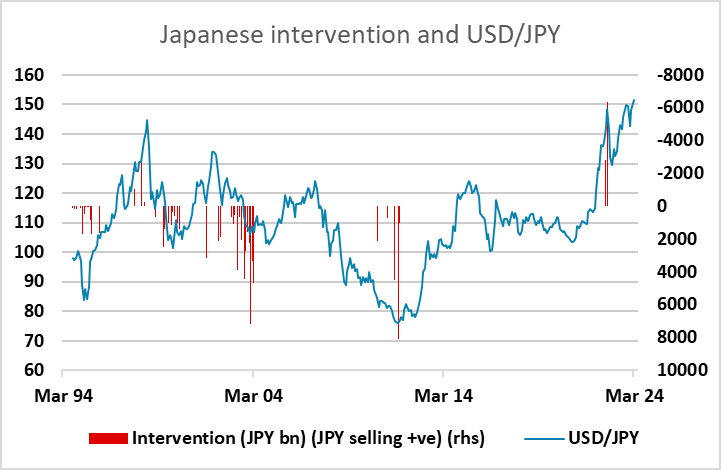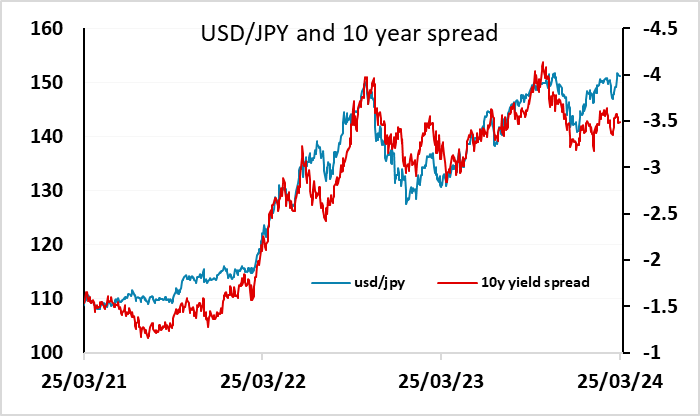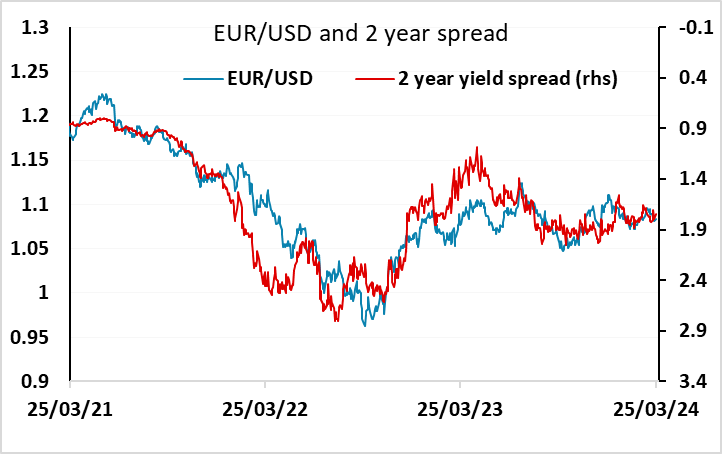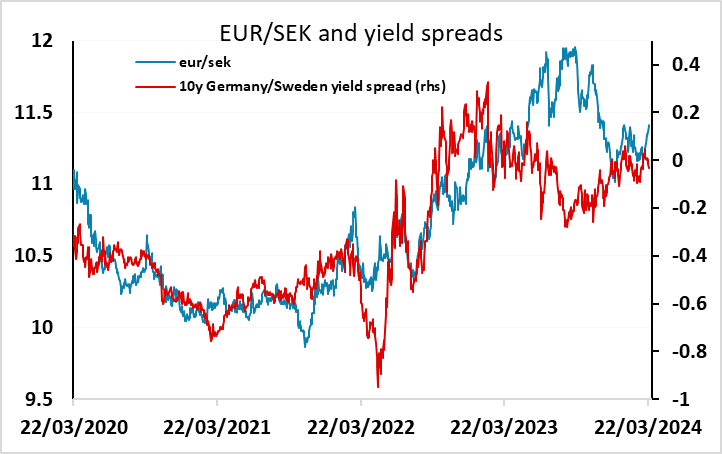FX Daily Strategy: Europe, March 26th

Once again little to drive FX markets on Tuesday
Increasing risk of BoJ intervention and sharp USD/JPY correction
EUR/USD range remains intact
Swedish data to inform market expectations of Riksbank
Once again little to drive FX markets on Tuesday
Increasing risk of BoJ intervention and sharp USD/JPY correction
EUR/USD range remains intact
Swedish data to inform market expectations of Riksbank
Tuesday looks like being another fairly quiet day for FX. The is second division US data in the form of durable goods orders, house price data and the Conference Board consumer confidence index, but these seem unlikely to affect the key question of whether inflation is falling fast enough to allow the Fed to ease in June, which is currently priced as around an 80% chance. Yields edged up a little on Monday, providing the USD with a little support against the JPY, but not against the European currencies with European yields rising as much if not more. With equities holding their own, this ensured a further decline in equity risk premia, also supporting a softer JPY on the crosses.

USD/JPY continues to eye the 151.94 high from October 2022 – a 24 year high - which was tested in November last year when a high of 151.92 was reached, while Friday saw a high of 151.86. The approach to this level triggered a response form the MoF’s Kanda on Monday, who said he was “closely watching FX moves with high sense of urgency”. Certainly, FX intervention has to be a significant risk here, with the October 2022 high having triggered significant intervention that helped start a decline of 23 figures in the subsequent 3 months to 128. This decline was accompanied by a significant decline in yield spreads, but the current UST/JGB spread is already at levels seen in mid-November 2022 when USD/JPY traded below 140. The MoF are more likely to conduct intervention when they have the support of market spreads, so we would be very wary of holding short JPY positions here. While there is potential for a break to new highs, with option dynamics potentially helping to trigger a break, we would expect any such break to be short lived and potentially being followed by sharp JPY gains with or without intervention.

In contrasts, the chances of a sharp move in EUR/USD look very slim. While the USD has managed a slightly firmer tone in the last few weeks, EUR/USD is still in the centre of the narrow 1.07-1.10 range seen this year, while the 1.0450-1.1275 range has held since the beginning of 2023. This is largely a consequence of the inflation dynamics in recent years having been determined by similar global supply factors rather than demand factors idiosyncratic to particular economies. But his is likely to change going forward, and the risk is that the relative strength of the US economy means the Fed is less comfortable easing than the ECB. If so ,the risks will be on the downside for EUR/USD, but we will need to see more strong S CPI data and the Fed signalling fewer rate cuts this year for this to happen. In the meantime, the range is likely to hold, with if anything a risk to the upside if equities remain solid due to the USD’s negative equity market correlation.

In Europe, there is some Swedish data in the form of PPI and manufacturing and consumer confidence and the economic tendency survey. These may garner more attention than usual because of the Riksbank meeting on Wednesday. It is ever clearer that the Riksbank has accepted that it can and should make its policy stance less contractionary, at least in conventional terms. This possibility has risen after the further downside inflation surprise seen in February data which undershot Riksbank thinking of CPIF inflation, at 2.5%, by 0.4 ppt and added to signs of clearly softer underlying price dynamics. A June cut has long been our view, the question being whether this is formally flagged by the Riksbank this week. Today’s data probably won’t have much impact on the Riksbank’s decision, but soft data could nevertheless exacerbate the SEK weakness seen on Monday, although this doesn;t currently look well supported by the recent yield movements.
